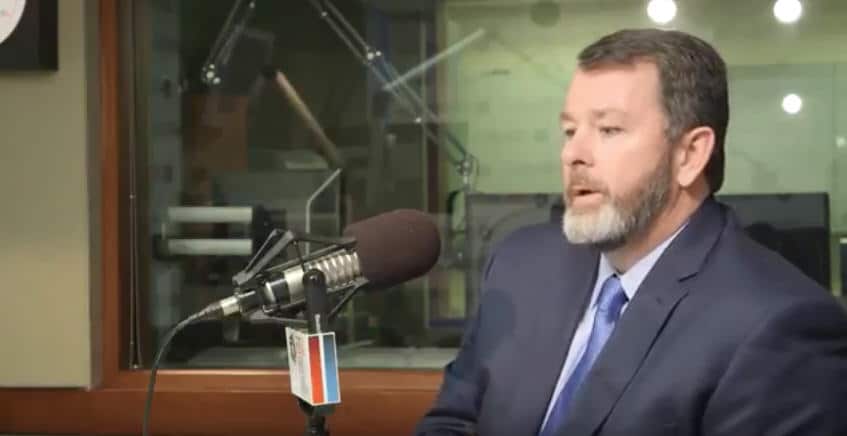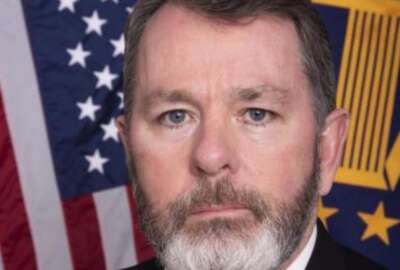Why the principal cyber advisor ended up being a good thing
Chris Cleary, the former principal cyber advisor for the Navy, left in November after three years in the role and helped establish the value of his office.
A few years ago, the Defense Department drafted a legislative proposal to get rid of principal cyber advisor positions across all services.
While this idea didn’t make it out of the Pentagon, three-plus years later, Chris Cleary, the former principal cyber advisor for the Department of the Navy, said that was a good thing.
Cleary, who left government recently and joined ManTech as its vice president of its global cyber practice, said the impact of the principal cyber advisor in the Navy is clear and lasting.

“This is challenging because all the services in the very, very beginning wanted to get rid of the principal cyber advisors. There was a legislative proposition that was trying to be submitted and Congress came over the top and said, ‘No, you’re going to do this,” Cleary said during an “exit” interview on Ask the CIO. “So year one in the job, I make the joke, I was just trying to avoid getting smothered by a pillow because no one wanted this position especially after we just stood up the re-empowered CIO office so what’s a PCA? And what’s this person going to do for the organization? I was very attuned to that and ready that if the decision is to push back on this creation, and maybe do away with the PCA job, I was just going to go back to being a chief information security officer. I was being a good sailor and focused on whatever are the best needs of the Navy. I was prepared to do that.”
The move to get rid of the principal cyber advisors never came to fruition and, instead, the Navy, and likely other military services, now see the value in the position.
Cyber advisor wields budget influence
Cleary said one way the principal cyber advisor continues to provide value is around budgeting for cybersecurity. He said each year his office submits a letter on the “budget adequacy” to the Defense Department’s planning process, called the Program Objective Memorandum (POM).
“I found that the PCA office really became the champion for advocating and supporting programs like More Situational Awareness for Industrial Control Systems (MOSAICS), which was a thing we were doing for operational technology systems ashore, and another product called Situational Awareness, Boundary Enforcement and Response (SABER), which was its cousin and for OT stuff afloat,” he said. “What you found is both of those programs are being championed by hardworking, honest Navy employees that just couldn’t break squelch to get a properly resourced or funded or programmed for. The PCA was able to champion these things within the E-Ring of the Pentagon. Things like MOSAICS, as an example, I am very proud of, we worked very closely with the Assistant Secretary of the Navy for Energy, Installations and Environment, Meredith Berger. She very quickly recognized the problem, most of this fell kind of within her sphere of influence as the person responsible for resourcing all of the Navy’s infrastructure. She very quickly embraced it, adopted it and hired an individual within the organization to look at this specifically.”
Cleary said over the course of the next few years, he worked with Berger’s team as well as other cyber experts in the Navy and across DoD to do deep dives into how to secure OT.
When the Defense Department rolled out its zero trust strategy in November 2022, the services faced more challenges around operational technology than typical IT. Cleary said the PCA helped the Navy better understand the OT stack was more complex and the tools used for IT wouldn’t necessarily work.
“The further you get down closer to an actual device or controller you can’t just roll a firewall out against that,” he said. “They have their own vulnerabilities and risks associated with them. But they’re things that we haven’t traditionally looked at when you when I’m talking about OT, like weapon systems, defense, critical infrastructure, these massive foundation of things that not only enable what we do from an enterprise IT standpoint, but we’ve got to keep the lights on and the water flowing, and the Aegis weapon system has lots of computers with it, but that isn’t an enterprise IT system so who’s looking at those, who’s resourcing those, it’s only been the last decade or so that we’ve seen a lot of these is legitimate target areas.”
Champion of attention, resources
Cleary said his office helped get the Navy to spend more money and resources on protecting operational technology because it wasn’t always a top priority.
The OT example, Cleary said, is exactly why Congress created the PCA.
“We didn’t do any of the work to create these things. We just champion them appropriately and ensure they got the attention they deserved. And then ultimately, the resourcing required so they can be successful,” he said.
Cleary said it was clear that after three-plus years as the principal cyber advisor for the Navy, the benefits outweighed any concerns.
He said with the cyber world becoming more convoluted and complex, the position helps connect dots that were previously difficult to bring together.
“I think Congress would come and ask a question and they would get 10 different answers from 10 different people. I’m not saying we got there. But the idea of the PCA was to get those 10 different answers from 10 different people and then try to consolidate that answer into something that made sense that we could agree upon and present that answer back to Congress,” he said. “I’m not going to say we fully succeeded there because there are a lot of ways around the PCA and the PCA offices, but I think as the offices get more and more established, organizations like Fleet Cyber Command for the Navy, the Naval Information Forces and others were seeing the benefit of the PCA’s job to be the middleman and deal with the back and forth.”
Continue to create trust
Cleary said toward the end of his tenure, these and other offices, including the Marines cyber office, started to work even more closely with his office on these wide-ranging cyber challenges. He said the principal cyber advisor was slowly, but surely becoming the trusted cyber advisor initially imagined.
“I use the analogy of a fishing line, when you start pulling out a fishing line and you’re not sure what the weight of the fishing line is, but if you break the line, it’s over. So the trick was to pull on it with just the right amount of tension without risking or breaking it,” he said. “I knew the PCA office was something new and if the relationships with those organizations became tenuous, or were cut off because of the PCA coming in and say, ‘Hey, you shall do this or that,’ it wasn’t going to work. The way I envisioned the role of PCA was not to tell anybody inside the organization how to operationalize their own environments. My whole job was to go to them and understand what it is they needed, based on their experience and their expertise, and then get them that. The more that I could be seen as a value and not here to check their homework and poke them in the eye about their readiness, the more successful I’d be.”
Cleary said for the principal cyber advisor to continue to be successful, they have to continue to establish trust, understand their role is personality driven and focus on getting the commands the money and resources they need to continue to improve their cyber readiness.
Copyright © 2025 Federal News Network. All rights reserved. This website is not intended for users located within the European Economic Area.
Jason Miller is executive editor of Federal News Network and directs news coverage on the people, policy and programs of the federal government.
Follow @jmillerWFED







